10 Skincare Mistakes You Must Avoid for Healthy, Glowing Skin
By
Nains
/ June 27, 2025
Introduction: Why Avoiding Skincare Mistakes Is Just as Important as Using the Right Products
- Following the newest trend may seem like the easiest way to achieve healthy, glowing skin in today’s fast-paced world, where thousands of skincare products are available on the market and social media is flooded with beauty tips.
- But here’s a shocking fact: if you’re unintentionally making common skincare blunders, even the most expensive skincare regimen may not work.
- Purchasing the proper creams and components is key, but avoiding things that damage your skin is just as critical, if not more so.
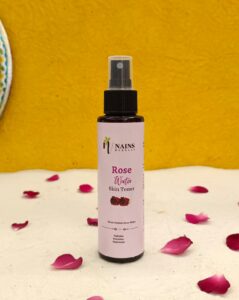
1. Skipping Sunscreen – Your Biggest Enemy
- Why Sun Protection Is Important Every Day
- Ignoring sunscreen is one of the most harmful and most ignored skincare errors.
- Whether you’re a skincare novice or an expert with a 10-step regimen, all of your hard work is being undermined if sunscreen isn’t a daily ritual.
- I can state with confidence that UV radiation is the leading cause of pigmentation, dullness, premature ageing, and in extreme situations, skin cancer, having worked extensively with both natural and dermatologically supported skincare products.
- Both UVA and UVB radiation, which are released by the sun, can penetrate the skin and cause cellular damage.
- While UVB rays are responsible for sunburns and noticeable tanning, UVA rays are particularly harmful since they can result in long-term damage like fine lines and wrinkles.

- It helps to use a broad-spectrum sunscreen with an SPF of 30 or higher:
- Avoid tanning and sunburn.
- Preserve the elastin and collagen fibres.
- Diminish dark patches and pigmentation
- Increase the efficacy of additional skincare products, such as retinol and vitamin C.
- Sunscreen serves as the last line of defence, sealing in your routine and protecting your skin from damage, regardless of whether you follow a scientific actives-based regimen or a simple herbal one.
- The Truth About Sunscreen Indoors and in Winters
- The idea that “I don’t need sunscreen indoors or during cloudy weather” needs to be dispelled.
- False.
- UVA rays can pass through glass screens, windows, and clouds.
- This implies that UVA radiation continue to gradually age your skin even whether you’re sitting by the window, driving, or binge-watching Netflix on a sunny terrace.
- Particularly in Indian skin tones that are more susceptible to melanin overproduction, indoor illumination, particularly blue light from screens, can also induce oxidative stress and lead to pigmentation.
- Although the light feels softer in the winter, UV rays are still present. Up to 80% of UV rays are reflected by snow and ice, which increases your vulnerability to harm when you’re outside.
- I can speak from experience when I say that my clients who adopted regular SPF use observed:
- Reduced outbreaks
- Reduced tanning
- a noticeable glow in three to four weeks
- indications of ageing more slowly over time
- The bottom line? The true star of your skincare regimen is sunscreen.
- It’s a daily, all-day protector, not simply a summer necessity. Ignoring it would be like building a house without a roof: if your skin is still subjected to environmental stress on a daily basis, all of your serums, moisturisers, and treatments will be in vain.
2. Over-Exfoliating – More Harm Than Glow
- How Much Is Excessive?
- One of those skincare routines that is immediately gratifying is exfoliation.
- After a thorough scrub or acid peel, your skin feels softer, smoother, and occasionally even more radiant.
- The issue is that too much of a good thing can become poisonous, and one of the worst skincare blunders you can do is exfoliating too much.
- As a herbal product developer and skincare formulator, I’ve noticed a startling increase in skin concerns, such as redness, breakouts, and sensitivity, all of which can be linked to over-exfoliation.
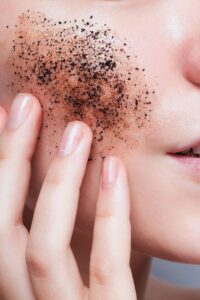
- Signs You’re Damaging Your Skin Barrier
- The outermost layer of your skin, known as the stratum corneum, is what keeps moisture in and keeps out irritants.
- Your skin becomes weak, sensitive, and inflammatory when this barrier is disrupted, which is frequently the result of excessive exfoliation.
- The following are indicators that your skin is begging for assistance:
- Continuous blotchiness or redness
- Sensations of tingling or stinging when using items
- Allergic responses or heightened sensitivity
- Despite moisturising, the texture is flaky or harsh.
- Rashes or sudden flare-ups of acne
- After cleansing, there may be tightness or an unpleasant “stripped” feeling.
- In my own consultations, I have witnessed people believing they are doing the right thing by using walnut scrubs every night or applying glycollic acid toners on a daily basis.
- Their skin typically seems more lifeless, irritable, and aged.
- Within two to three weeks, their skin showed noticeable improvement after we decreased exfoliation and added barrier-repairing substances like calendula, ceramides, and niacinamide.
- Have faith in the process. Depending on your age and condition, your skin normally regenerates every 28 to 40 days.
- This natural cycle is upset by excessive exfoliation, which results in chaos rather than clarity.
- A vicious cycle may be in place if you feel the need to exfoliate frequently simply to keep your skin looking radiant. Shatter it.
- Instead, use a mild exfoliation that is appropriate for your skin type, then hydrate and nourish your skin.
3. Not Removing Makeup Properly
- Wearing Makeup to Sleep: A Surefire Way to Get Breakouts
- We’ve all experienced nights when we’re too exhausted to take off our makeup, let’s face it. However, one of the worst habits for the health of your skin is doing this on a regular basis.
- Wearing makeup to bed is a step backward if you want skin that is radiant and free of imperfections.
- I’ve dealt with scores of customers who have experienced unexpected acne, blackheads, and unexplained dullness in my capacity as a skincare formulator and consultant.
- In each case, I’ve found that the cause was either sleeping with their makeup on or, worse, not removing it completely.
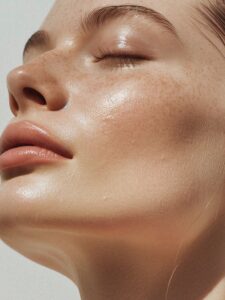
- Even makeup labelled as “non-comedogenic” shouldn’t be worn to bed.
- When removal is skipped, the following may occur:
- Blackheads and clogged pores
- Acne and breakouts
- accelerated ageing brought on by damage from free radicals
- Dry, flaky areas caused by an imbalance in moisture
- Infections of the eyes or inflamed lash lines (if wearing cosmetics)
- According to dermatologists, oxidative stress, which is closely related to accelerated ageing, can also result from makeup combined with environmental pollutants.
- Even eyelid dermatitis or lash damage can result from sleeping with mascara or eyeliner on.
- The rule of gold?
- Always remove your makeup, regardless of how exhausted you are. The best time for your skin to regenerate is between 10 PM and 2 AM. Makeup shouldn’t get in the way.
- Double Cleansing – Is It Necessary?
- Because of my background in product creation, I suggest natural oil cleansers that contain non-comedogenic, antioxidant-rich components like jojoba, hempseed, or grapeseed oil.
- To leave your skin feeling clean, balanced, and rejuvenated, use a mild herbal face cleanser without sulphates, such as one that contains green tea, aloe vera, or rose water.
- Customers that have used double scrubbing frequently report:
- Pores that are clearer
- Diminished acne
- Skin that is smoother
- Better absorption of the product
- Still doubtful? Consider this: your pricey serums and moisturisers won’t work as well if your skin isn’t totally clean. They are merely perched upon garbage and outdated cosmetics.
- Therefore, if you want your skin to breathe and glow, twice washing is absolutely essential.
4. Using Too Many Products at Once
- Layering Done Wrong
- In the era of 12-step routines and skincare influencers, it’s simple to assume that using more products would result in healthier skin.
- It’s tempting to combine brightening serums, hydration boosters, pore-tightening toners, and exfoliating acids in the hopes of seeing quicker benefits.
- Your skin doesn’t require everything at once, though, as I’ve discovered after years of formulation and skin consultancy.
- It might backfire to overburden your skin with products, particularly active ones like retinol, vitamin C, niacinamide, AHAs, BHAs, peptides, and exfoliants.
- You end up with confused skin, redness, irritation, breakouts, or a compromised barrier in place of radiant skin.
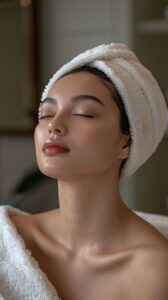
- You’re basically playing scientist without the lab testing or scientific formulation when you combine too many active ingredients without knowing how well they work together. This method frequently results in:
- Product pilling is the clumping and rolling off of product layers.
- Burning or redness
- A rise in breakouts
- Unbalanced moisture or excessive hydration
- Photosensitivity (heightened sensitivity to sunlight)
- For instance, combining retinol plus benzoyl peroxide or vitamin C with AHAs can result in severe irritation. Even applying several layers of oils or moisturisers might clog pores, particularly if they aren’t non-comedogenic.
- Keep It Simple, Keep It Effective
- Many businesses will not tell you this, yet the majority of skin types benefit greatly from a straightforward, reliable, and carefully considered skincare regimen.
- All a decent daily routine need is:
- A mild cleanser
- A moisturising mist or toner
- A serum for specific treatment (depending on your skin issue)
- A moisturising agent
- (during the day) Sunscreen
- You can use an oil-based repair product or night cream in place of sunscreen at night.
- The secret is to launch one new product at a time and allow it to produce results for at least two to three weeks.
- This enables you to monitor what functions well and what does not. Additionally, it keeps your skin from becoming irritated or overworked.
5. Ignoring Your Neck and Hands
- The Ignored Regions That Age the Most
- The face usually receives the most attention when we think about skincare; meticulously, twice daily, we apply cleansers, serums, masks, and creams.
- However, many people make the crucial error of disregarding the hands and neck, which are actually among the first places to exhibit indications of ageing.
- The skin on your hands and neck is thinner and more delicate than the skin on your face, according to professional formulation and skin science.
- It is more prone to dryness, sagging, and wrinkles since it has less oil glands.
- If not properly cared for, regular exposure to the sun, pollutants, and friction from hand washing or clothing can all contribute to premature ageing.

- Extend Your Skincare Beyond the Face:
- The good news? Your hands and neck don’t require their own 5-step program. Your neck and hands require the same hydration, UV protection, nourishment, and mild exfoliation as your face does.
- Here’s how to successfully prolong your routine:
- Gently Clean:
- Allow the cleanser to reach your neck as you wash your face. It’s safe for your hands and neck to use a mild face cleanser that contains tea tree, aloe vera, or rose water.
- Hydrate and Care for:
- Use upward motions on your neck when applying moisturisers or serums, exactly as you would on your face.
- Use liquorice extract, niacinamide, or kojic acid with your usual treatments to treat pigmentation or dark patches on your hands.
- Apply sunscreen every day.
This cannot be negotiated. Like your face, put SPF on your hands and neck every morning. UVA rays age whatever they come into contact with; they don’t discriminate. Zinc oxide-containing mineral sunscreens work very well and don’t irritate these sensitive areas. - Exfoliation every week:
Once a week, use mild scrubs (such as oatmeal or rice flour) to get rid of dead skin off the backs of your hands and neck. This enhances the nutritious items’ texture and increases their absorption. - Repairing at Night:
Apply the remaining product on your hands and neck at night. Use any remaining face oil, night cream, or serum. Within a few of weeks, you’ll see tighter, smoother skin.
6. Not Knowing Your Skin Type
- Not Every Routine Fits All
- Following a skincare regimen that isn’t customised for their skin type is one of the biggest—and most frequent—mistakes people make.
- In the age of viral trends, influencer product hauls, and one-size-fits-all recommendations, it’s easy to fall into the trap of copying someone else’s routine.
- However, I’ve seen through years of working with customers and developing unique herbal formulas that what works beautifully for one individual might have disastrous effects on another.
- Skincare is very personal and not universal. Oily skin may get greasy and congested after using a product that moisturises dry skin well.
- Someone with sensitive skin may become irritated by an exfoliator that helps mixed skin remove acne scars.

- Neglecting your skin type frequently results in:
- Pore blockages and breakouts
- Flakiness and dryness
- A rise in the production of oil
- Sensitivity or redness
- spent money and time on the wrong things.
- As a professional, I have advised clients who were unaware that they were using harsh acne treatments on dry skin, heavy creams on oily face, or strong active ingredients on sensitive skin, and who were then perplexed as to why their skin continued to deteriorate.
- The items aren’t awful; they’re just not suitable for the skin type.
- The cornerstone of a successful skincare regimen is knowing your skin type.
- It establishes the product’s texture, composition, formulas, and usage frequency. Skincare turns into an annoying guessing game in the absence of this clarity.
How to Identify and Treat Your Skin Type Right:
- First, let’s examine the primary skin types and how to recognise them:
- Normal Skin:
- Oil and hydration balance Not many flaws or dry areas No pores are expanded. After cleaning, I feel at ease
- Use SPF, mild moisturisers, and moisturising toners for moderate upkeep.
- Parched Skin;
- feels flaky or tight. seems boring most of the time. Tiny or undetectable pores Makeup can cling or crack
- Use nourishing oils (like avocado or almond oil), moisturising serums (like hyaluronic acid), and heavier creams.
- Oily Skin:
- Shiny face or T-zone Larger pores prone to acne and blackheads
- Make use of clay masks, mild serums, and gel-based moisturisers. Seek out components such as salicylic acid, green tea, or niacinamide.
- Mixture Skin:
- that is dry in some places and oily in others (typically the T-zone) It can be challenging to balance
- Make use of oil-free but moisturising products, and apply different remedies to different regions.
- Sensitive Skin:
- Responds Quickly to Weather or Products Itching, burning, or redness
- Steer clear of strong active ingredients, alcohol, and scents.
- Make use of soothing components such as oat extracts, calendula, chamomile, and aloe vera.
- Try this easy test at home to determine your skin type: Use a mild cleanser to wash your face, then pat it dry.
- Try this easy test at home to determine your skin type:
- Use a mild cleanser to wash your face, then pat it dry.
- Hold off on applying anything for an hour.
- Examine your skin:
- Tightness = Dry
- Shiny appearance = oily
- Dry cheeks and an oily T-zone = combination
- Feels good = Normal
- Red or angry = Sensitive
- From a reliable skincare standpoint, this insight enables you to make thoughtful product selections and prevent needless aggravation.
- You need a tailored, skin-type-specific routine, not a convoluted one.
- The three skin types in Ayurveda—Pitta (sensitive or prone to acne), Kapha (oily), and Vata (dry)—are determined by your prakriti (body constitution), which is in line with contemporary skin classification.
7. Popping Pimples – A Dangerous Habit

- Why It Makes Inflammation and Scars Worse
- Particularly when they show up just before an occasion or during stressful times, pimples can be annoying.
- However, popping pimples is one of the worst habits you can form for your skin, no matter how alluring it may seem.
- Working with customers who have acne and creating plant-based anti-acne products, I have personally witnessed how this one habit may escalate a mild breakout into a serious skin issue.
- What actually occurs when a pimple pops is as follows:
- Not only is the trapped pus being released, but bacteria, oil, and debris are also being forced deeper into the skin, increasing inflammation.
- This frequently results in:
- Extended periods of recovery
- acne scars that are deep and dark (post-inflammatory hyperpigmentation)
- Cysts filled with pus or infections
- Enlarged pores and broken capillaries
- Permanent scarring that is rough or pitting
- Worldwide, dermatologists and skin specialists concur that popping zits causes more harm than good.
- You risk rupturing the pore wall if you put pressure on the blemish, particularly with your fingers or nails.
- Damage to the surrounding tissue causes increased redness, swelling, and bacterial migration to neighbouring pores.
- Throughout my clinical and product development expertise, I have frequently observed patients who initially had a small number of active pimples but who, as a result of their continual picking, developed chronic post-acne scarring.
- Years of attempting to repair textural damage resulted from what began as a minor skin problem.
- More dangerously, picking at pimples around sensitive spots like the mouth or nose can cause infections that can occasionally spread to deeper blood vessels, a condition known as the “triangle of death” in dermatology.
- Therefore, the next time you believe that popping a zit would hasten its disappearance, keep in mind that you are exchanging short-term relief for long-term harm.
Better Alternatives to Clear Acne:
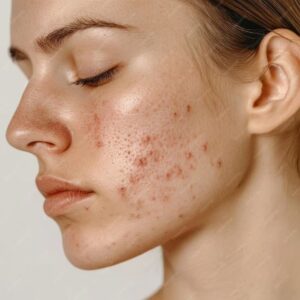
- Focus on intelligent, scientifically supported, and skin-friendly acne management techniques rather than popping pimples. Patience and persistence are essential whether you’re employing natural therapies or contemporary active ingredients.
- Here are some reliable substitutes:
- Apply Spot Treatments:
- Directly apply sulphur, tea tree oil, or salicylic acid-based tailored remedies to imperfections. These components aid in safely drying out the pimple, reducing inflammation, and unclogging pores.
- Use a cold compress or ice:
- Without irritating the skin, icing a pimple for five to ten minutes lowers its redness and swelling. It works very well for excruciating cystic pimples.
- Examine Natural Actives:
- Herbal substances with antibacterial and anti-inflammatory qualities include liquorice root, clove oil, turmeric, and neem. To prevent irritation, use diluted versions or properly designed products.
- Make Use of Non-Comedogenic Lotions:
- Acne can be made worse by dry skin. To calm without clogging pores, use mild gel-based moisturisers that contain aloe vera or niacinamide.
- Avoid Grasping Your Face:
- Throughout the day, keep your hands away from your face. Frequent touching exacerbates outbreaks by transferring oil, germs, and debris.
- Take Care of Your Skin Gently:
- Steer clear of excessive exfoliation and use gentle cleansers. Your skin produces more oil when you use harsh washing or drying products, which increases the likelihood of breakouts.
8. Using Harsh Ingredients Without Guidance
- The Dangers of Homemade Skincare
- Thanks to social media and a growing interest in natural beauty, DIY skincare has become incredibly popular in recent years.
- Making your own masks and treatments at home can be powerful, but utilising harsh or imbalanced substances without the right information or supervision has major drawbacks.
- As a professional who works with both natural and clinically approved active ingredients, I have seen instances when well-intentioned do-it-yourself trials resulted in permanent skin damage.
- Why? Since many strong actives, whether synthetic or natural, require the proper concentration, formulation, and pH balance to be both effective and healthy for the skin, not all natural components are safe.
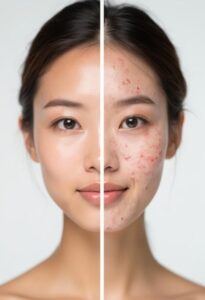
- The Risks of DIY Skincare:
- Thanks to social media and a growing interest in natural beauty, DIY skincare has become incredibly popular in recent years.
- Making your own masks and treatments at home can be powerful, but utilising harsh or imbalanced substances without the right information or supervision has major drawbacks.
- As a professional who works with both natural and clinically approved active ingredients, I have seen instances when well-intentioned do-it-yourself trials resulted in permanent skin damage.
- Why? Since many strong actives, whether synthetic or natural, require the proper concentration, formulation, and pH balance to be both effective and healthy for the skin, not all natural components are safe.
- Let’s examine a few typical instances:
- A common brightening agent is lemon juice. However, when applied uncooked, its high acidity can result in pigmentation, photosensitivity, and chemical burns, particularly on Indian skin tones.
- Baking soda is used to treat acne and exfoliate skin. It causes redness, dryness, or breakouts by upsetting the normal pH of your skin, weakening the protective layer.
- When used directly without dilution, essential oils with high concentrations, such as tea tree or clove oil, can cause extreme irritation.
- The improper layering of over-the-counter actives, such as retinol, glycollic acid, or vitamin C serums, might result in peeling, inflammation, or even improper skin purging.
9. Inconsistent Skincare Routine
- As a skincare formulator and advisor, I frequently remind clients that even the most effective ingredients require time and regular application to show results.
- Your skin is a living organ that is constantly renewing itself, and this natural renewal process takes around 28 to 40 days, depending on your age, health, and skin condition.
- If you’re not consistent, you interrupt this cycle and never give your skin the chance to heal or improve.
- Many people spend thousands of dollars trying high-end products or switching routines every few weeks in quest of healthy, glowing skin.

- Your skin won’t benefit from a brightening serum that contains the optimum form of vitamin C if you just use it twice a week or forget about it for days at a time.
- Similarly, a high-quality anti-acne gel can’t eliminate outbreaks overnight if you just apply it irregularly.
- From a scientific and professional perspective, consistency enhances substance absorption, lowers inflammation, and controls skin barrier function.
- Routines that are inconsistent cause confusion for the skin, which frequently leads to increased sensitivity, dryness, or oiliness.
- In my practical experience working with clients, people who adhered to even basic regimens (such as using a cleanser, moisturiser, and sunscreen) and did so daily experienced noticeably better outcomes than those who tried five different products every month.
- Stick to a Routine Before Judging Results:
- Giving up on a routine or product too soon is another typical error. For the majority of skincare issues, like as acne, pigmentation, dullness, or fine wrinkles, to show noticeable improvement, weeks to months of regular treatment are needed.
- This is a reasonable timeline:
- Hydration and glow: apparent within a week or two
- Improvement in texture: three to four weeks
- Reduction of pigmentation: 6–8 weeks
- Results of anti-aging: 8–12+ weeks
- You’re not allowing your skin to adjust and react if you’re changing cleansers every ten days or experimenting with a new serum every two weeks.
- Changing ingredients frequently also increases the chance of ingredient conflicts, which can irritate your skin or perhaps make it worse.
- The proper manner? Unless you see obvious irritation or allergic reactions, choose a basic skincare regimen depending on your skin type and follow it for at least 6 to 8 weeks.
- This routine should include cleansing, treatment, moisturiser, and sunscreen.
- For balanced skin and health, even Ayurvedic and holistic systems place a strong emphasis on dinacharya, or daily ritual.
- Maintaining a steady beat promotes harmony between your skin and body, which strengthens you from the inside out.
- Introduce new items one at a time, at regular intervals, if you wish to test them out. This will allow you to clearly monitor what is and is not functioning.
- And keep in mind that you don’t have to be flawless; a day off here and there won’t reverse all of your hard work. Making an effort and taking care of your skin on most days is what counts.
10. Not Staying Hydrated Inside and Out
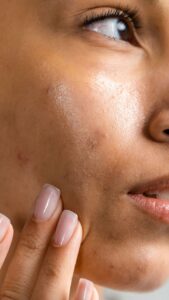
- How Your Skin Is Affected by Internal Hydration
- Finding the ideal moisturiser or serum for radiant skin is a common obsession, but the most effective beauty habit is also the most straightforward: drinking enough water.
- The greatest organ in your body is your skin, and like all organs, it benefits greatly from internal hydration. One of the most underappreciated skincare errors that can subtly undermine your radiance is neglecting internal hydration.
- As a skincare specialist who combines natural, Ayurvedic knowledge with contemporary dermatological insights, I have repeatedly observed how interior dehydration shows itself on the outside as:
- Skin that is flaky and dry
- Absence of brightness or dullness
- Enhanced sensitivity
- Increasing visibility of fine lines
- Even after moisturising, tightness
- Use Humectants Like Gels and Serums Smartly:
- Just as important as internal hydration is topical hydration, but it calls for a clever strategy. No matter how much water you drink, using drying cleansers or applying thick lotions without water might cause your skin to feel parched. Your regimen needs to have humectants, which are substances that draw water to the skin, to help you stay hydrated.
- Typical and efficient humectants consist of:
- Hyaluronic acid is a substance that draws moisture from the surroundings.
- Glycerin, which naturally attracts moisture
- Aloe vera gel (hydrating and soothing)
- (Pro-vitamin B5) Panthenol
- These components enhance texture, fill up the skin, and maintain the skin’s natural moisture barrier. However, time is crucial:
- Use humectant-based gels or serums on wet skin to increase the efficiency of hydration by drawing water into the skin’s surface.
- Always use a moisturiser or face oil to seal them in so that moisture doesn’t evaporate (a process known as “transepidermal water loss”).
- In my experience developing new products, consumers who used moisturising serums or gels with aloe vera reported the best effects when they were used immediately after washing their faces, rather than after their skin had completely dried.
FAQS
1. What is the biggest skincare mistake most people make?
Skipping sunscreen daily is the most common and damaging skincare mistake. Even on cloudy days or indoors, UV rays can cause premature aging, pigmentation, and loss of skin elasticity.
2. How often should I exfoliate my face?
2–3 times a week is ideal for most skin types. Over-exfoliation can damage your skin barrier, leading to sensitivity, redness, and breakouts. Choose a gentle exfoliant suitable for your skin type.
3. Is double cleansing necessary if I don’t wear makeup?
Yes—especially if you apply sunscreen or live in polluted environments. Double cleansing removes oil-based impurities first (like SPF or sebum), then water-based dirt with your regular face wash.
4. Can I use the same products all year round?
Not always. Your skin’s needs change with seasons. In summer, go for lightweight gels and mattifying products. In winter, opt for richer creams and barrier-repairing moisturizers.
5. How do I know my skin type accurately?
Do the bare-face test: wash your face, don’t apply anything, and observe your skin after 1 hour. If it feels tight = dry; shiny = oily; oily T-zone + dry cheeks = combination; balanced = normal.
6. Will popping pimples really leave scars?
Yes. Squeezing or picking pimples pushes bacteria deeper, damages tissues, and often leaves behind dark spots or permanent texture scars. Use a spot treatment instead and let it heal naturally.
7. What ingredients should I avoid if I have sensitive skin?
Avoid alcohol-based toners, harsh exfoliants, undiluted essential oils, synthetic fragrances, and high-strength actives unless prescribed. Stick to calming ingredients like aloe vera, chamomile, and oat extracts.
8. Do I really need to apply products on my neck and hands?
Yes. The neck and hands are among the first areas to show aging. Extend your sunscreen, moisturizer, and serums to these areas for even-toned, youthful skin.
9. How long should I wait before expecting results from skincare?
Most products need 4–8 weeks to show visible results. Consistency is key. Don’t judge a product too soon unless you’re experiencing irritation or allergic reactions.
10. Can I fix my skin even after making these mistakes for years?
Absolutely! Skin has an amazing ability to repair itself with the right care. Identify your skin type, build a consistent routine, use safe ingredients, and protect with sunscreen—your skin will thank you.
